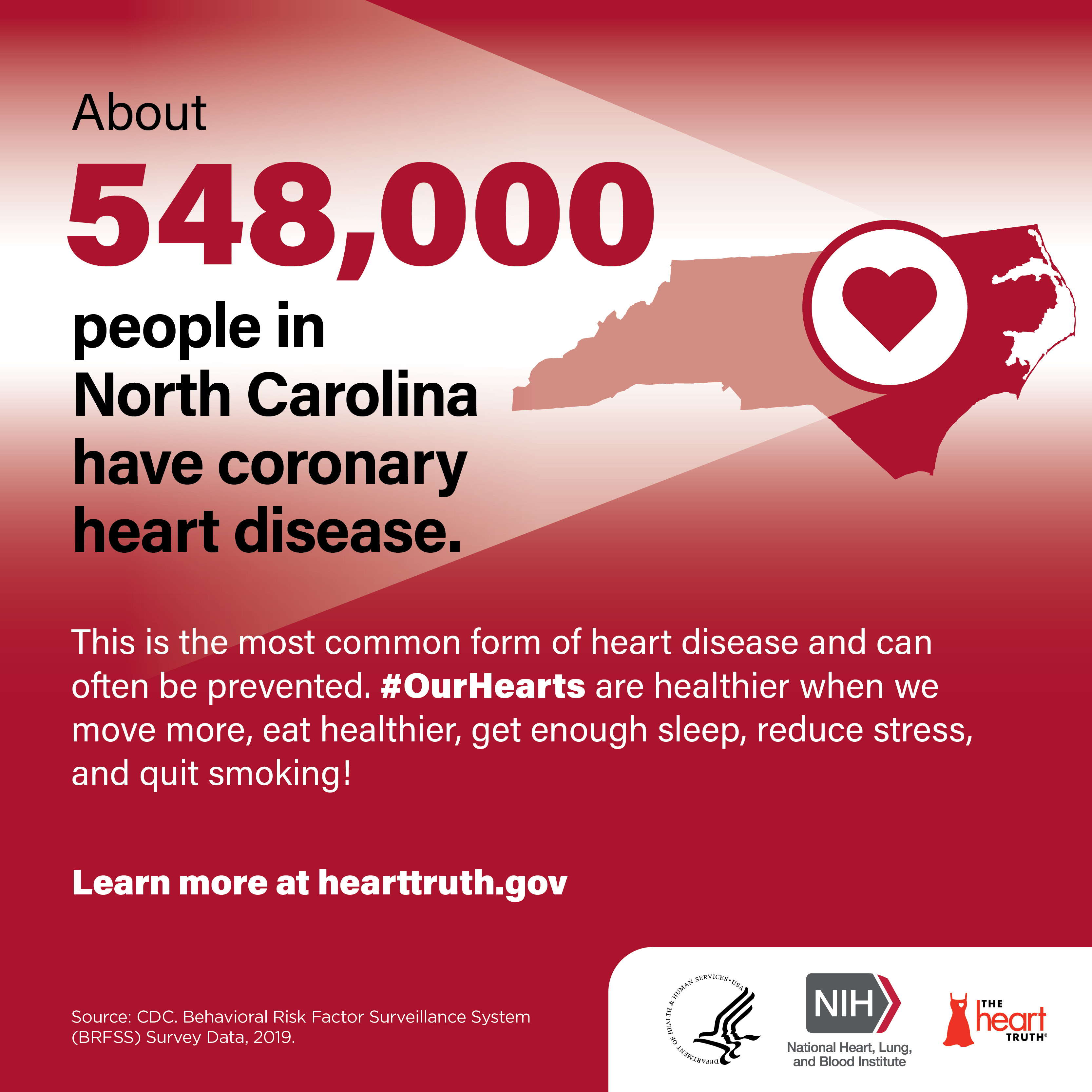Heart Healthy Living
go.ncsu.edu/readext?768797
en Español / em Português
El inglés es el idioma de control de esta página. En la medida en que haya algún conflicto entre la traducción al inglés y la traducción, el inglés prevalece.
Al hacer clic en el enlace de traducción se activa un servicio de traducción gratuito para convertir la página al español. Al igual que con cualquier traducción por Internet, la conversión no es sensible al contexto y puede que no traduzca el texto en su significado original. NC State Extension no garantiza la exactitud del texto traducido. Por favor, tenga en cuenta que algunas aplicaciones y/o servicios pueden no funcionar como se espera cuando se traducen.
Português
Inglês é o idioma de controle desta página. Na medida que haja algum conflito entre o texto original em Inglês e a tradução, o Inglês prevalece.
Ao clicar no link de tradução, um serviço gratuito de tradução será ativado para converter a página para o Português. Como em qualquer tradução pela internet, a conversão não é sensivel ao contexto e pode não ocorrer a tradução para o significado orginal. O serviço de Extensão da Carolina do Norte (NC State Extension) não garante a exatidão do texto traduzido. Por favor, observe que algumas funções ou serviços podem não funcionar como esperado após a tradução.
English
English is the controlling language of this page. To the extent there is any conflict between the English text and the translation, English controls.
Clicking on the translation link activates a free translation service to convert the page to Spanish. As with any Internet translation, the conversion is not context-sensitive and may not translate the text to its original meaning. NC State Extension does not guarantee the accuracy of the translated text. Please note that some applications and/or services may not function as expected when translated.
Collapse ▲Have you ever had that feeling where your lose your breath for a few minutes, your palms starts to sweat, you feel a little bit shaky and light headed and your heart just start to race? Where you feel like your heart is being squeeze or burst out of your chest? No I’m not talking about falling in love, I’m talking about symptoms of a heart attack. Did you know that every 40 second, someone in the United States has a heart attack?
A heart attack occurs when the blood flow that brings oxygen to your heart is severely reduced or cut off. This happens because coronary arteries that supply the heart with blood flow becomes clogged or narrowed from a buildup of plaque consisting of fat, cholesterol and other substances. A heart attack is not the same for everyone and can vary between men and women which is why it’s important to learn the signs of a heart attack.
February is a month of love and hearts but not just the candy kind. It’s also National Heart Health month where American everywhere turns their attention to the No. 1 killer of American: Heart Diseases. This event was first proclaimed by President Lyndon B Johnson in 1964, nine years after his heart attack.
Heart disease kills more people than all forms of cancer combined. According to the American Heart Association, 83% believe that heart attacks can be prevented but aren’t motivated to do anything. While technology has helped advance many of our modern medicine, an unhealthy lifestyle choices combine with rising obesity rates in both kids and adults have hinder progress fighting with heart disease.
On a positive note, heart disease is preventable, all you need to do is start taking steps towards living a healthier lifestyles. Here are some tips to living a healthier you:
- Start by getting your blood pressure and cholesterol check. Both of these are major risk factors for heart disease, especially if you’ve had a medical family history of heart diseases.
- Choose heart health foods including more vegetables such as leafy greens, broccoli, and carrots, making your grains whole, choosing protein rich foods such as fish, lean meats, nuts, seeds, and legumes, and choose food high in monounsaturated and polyunsaturated fats. Try to limit food high in sodium, saturated and trans fat, and added sugar
- Maintain a healthy weight. If you haven’t done so, check out your BMI or Body Mass Index at the National Heart, Lung and Blood Institute with their BMI Calculator.
- Get in at least 30 minutes moderate-intensity aerobic activity each day—this can including a brisk walk, running, biking, and swimming.
- Manage stress. Consider healthy stress reducing activities such as: talking to a professional counselor, participating in a stress management program, practicing meditation or deep breathing or talking with a friend, family or religious support system.
You can start living a heart healthy life by learning more about different heart healthy choices and steps that you can take to reduce your chances of getting heart disease. Check out the National Heart, Lung, and Blood Institute or the American Heart Association to learn more about heart health for National Heart Health Month. Follow us in the month of February via our Extension Facebook page for more tips on living a heart healthy lifestyle.





